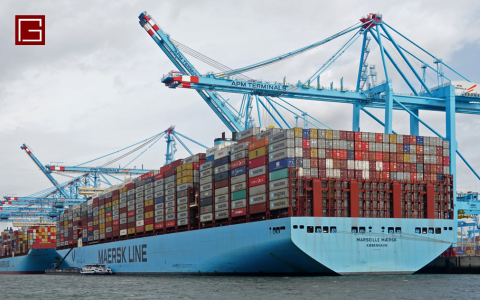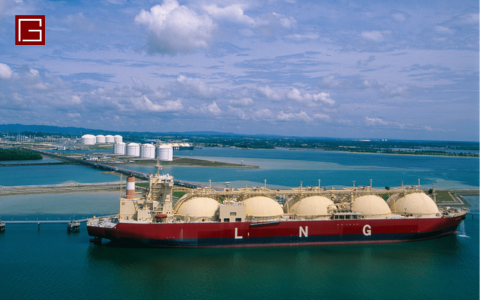BLog New
Classification of Cargo Ships
Cargo ships play a vital role in the global logistics industry, enabling the transport of massive volumes of goods across oceans and waterways. From gigantic container ships to oil tankers and bulk carriers, each type serves a unique function and contributes significantly to the world economy. In this article, we’ll explore the most common types of cargo vessels, along with some of the most iconic ships that have shaped maritime history.
CONTENTS
1. What Is a Cargo Ship?
A cargo ship is a vessel specifically designed to transport goods via sea routes, rivers, or oceans. These ships are the backbone of international logistics, offering a cost-effective solution for moving large quantities of freight across long distances—especially compared to air transportation.
Cargo ships are categorized based on the type of cargo they carry. Below are the most common types, along with notable examples from global shipping history.
2. Common Types of Cargo Ships
2.1. Container Ships
Container ships are designed to carry standardized shipping containers, making the transport of goods highly efficient and adaptable.
Examples:
-
Emma Mærsk (Launched in 2006, operated by Maersk Line): Once among the largest container ships in the world, with a capacity of approximately 15,500 TEU (Twenty-foot Equivalent Units).
-
Ever Given (Launched in 2018): Gained international attention when it blocked the Suez Canal in 2021, disrupting global supply chains and highlighting the critical importance of maritime shipping routes.

2.2. Bulk Carriers
Bulk carriers are vessels designed to transport unpackaged bulk cargo such as iron ore, coal, wheat, or grains.
Examples:
-
MS Berge Stahl (Launched in 1986): One of the largest bulk carriers in the world, with a deadweight tonnage (DWT) of over 364,767 tons.
-
Vale Brasil (Launched in 2011): The largest iron ore carrier globally, with a carrying capacity of 400,000 DWT.
2.3. Oil Tankers
Oil tankers are specialized ships used to transport crude oil, gasoline, liquefied gas, and other petroleum products.
Examples:
-
Seawise Giant (Launched in 1979): Once the largest ship ever constructed, with a deadweight tonnage of 564,763 DWT. It was scrapped in 2010.
-
TI Europe (Launched in 2002): One of the largest oil tankers still in operation, with a capacity of around 440,000 DWT.

2.4. RO-RO (Roll-on/Roll-off) Ships
RO-RO ships are designed to transport wheeled cargo such as cars, trucks, and trailers that are driven on and off the vessel.
Example:
-
MV Tønsberg (Launched in 2011): One of the largest RO-RO vessels in the world, capable of carrying thousands of vehicles simultaneously.
2.5. LNG/LPG Carriers
These vessels are built to transport liquefied natural gas (LNG) and liquefied petroleum gas (LPG), requiring specialized containment systems to handle cryogenic and pressurized cargo.
Example:
-
Mozah (Launched in 2008): One of the largest LNG carriers globally, with a capacity of 266,000 cubic meters.

2.6. Reefer Ships (Refrigerated Cargo Ships)
Reefer ships are specialized vessels used for transporting perishable goods that require temperature-controlled environments, such as frozen foods, fruits, and seafood.
Example:
-
Star Reefer – Operated by Star Reefers, this fleet transports fruits from South America to Europe under precise refrigeration conditions.
2.7. Chemical Tankers
These vessels are specially designed to carry hazardous industrial chemicals, often requiring complex safety systems and segregated tanks.
Example:
-
Bow Pioneer – A modern chemical tanker equipped with advanced safety technologies for the secure transport of dangerous cargoes.
2.8. Multi-Purpose Ships (MPP)
Multi-purpose ships are versatile vessels capable of carrying a wide range of cargo, including containers, bulk goods, and oversized industrial equipment.
Example:
-
BBC Chartering Fleet – A global fleet of MPP vessels specializing in transporting heavy and oversized cargo for various industries.
3. Why Are Cargo Ships Important?
-
Cost-effective: Sea freight offers significantly lower costs compared to air or land transportation, especially for long distances and large volumes.
-
High capacity: A single cargo ship can carry hundreds of thousands of tons of goods in one voyage.
-
Environmentally friendly: Ships emit less CO₂ per unit of cargo transported compared to airplanes, making them a greener option.
4. Conclusion
Cargo ships are an indispensable component of the global supply chain. Understanding the various types of ships allows businesses to make informed decisions about transportation solutions. From container ships to oil tankers, each vessel type plays a crucial role in driving international trade and economic growth.

We hope this article has satisfied your curiosity about the fascinating world of ships. If you’re inspired by these engineering marvels and want to bring a piece of that maritime magic into your own space, don’t hesitate to visit the Gia Nhien’s showroom. With a collection of over 1,000 handcrafted wooden ship and boat models, each piece is meticulously made from natural wood by skilled artisans, capturing the elegance, detail, and heritage of real vessels.
These exquisite models are not only a celebration of fine craftsmanship but also the perfect addition to elevate your home or office decor with a touch of nautical charm.
👉 Explore the full collection of model ships here: https://woodenmodelships.net/shop/
And don’t forget to follow the Gia Nhien Wooden Ship Models Blog for more captivating stories and knowledge from the maritime world!

